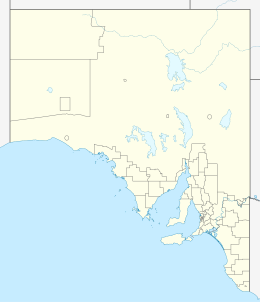| Geography | |
|---|---|
| Location | Spencer Gulf |
| Coordinates | 34°36′31″S 135°58′57″E / 34.608483°S 135.982584°E[1] |
| Highest elevation | 10 m (30 ft) |
| Administration | |
Australia | |
Rabbit Island is a rarely visited 32 hectares (79 acres) island located in Louth Bay, Spencer Gulf, South Australia.[2] It also bears the historic French name of Ile Raynal. Unlike the larger, privately owned Louth Island which sits 3 kilometres (1.9 miles) to the north-west, Rabbit Island is public land and part of the Lincoln National Park.[3][4] A diversity of native flora and fauna species have been recorded on the island.[5]
Flora and fauna
[edit]Little penguins have been observed nesting on Rabbit Island,[6] but the size and status of the colony is unknown. Species of conservation concern listed under the National Parks and Wildlife Act 1972 which have been recorded on the island include the fairy tern (listed as endangered) and the bush stone-curlew, Cape Barren goose, sooty oystercatcher and rock parrot (listed as rare).[5]
See also
[edit]References
[edit]- ^ "Search results for 'Rabbit Island, Is' with the following datasets selected - 'NPW and Conservation Properties', 'Suburbs and Localities' and 'Gazetteer'". Location SA Map Viewer. South Australian Government. Retrieved 27 June 2019.
- ^ Boating Industry Association of South Australia (BIA); South Australia. Department for Environment and Heritage (2005), South Australia's waters an atlas & guide, Boating Industry Association of South Australia, p. 213, ISBN 978-1-86254-680-6
- ^ "Lincoln National Park Management Plan". Department of Environment Water and Natural Resources. 2004. p. 14. Retrieved 26 January 2014.
- ^ "Search results for Rabbit Island (Record number SA0037132) on Property Location Browser". Government of South Australia. Retrieved 11 April 2015.
- ^ a b "Explore your area". Atlas of Living Australia. Retrieved 11 April 2015.
- ^ "Occurrence records". Atlas of Living Australia. Retrieved 11 April 2015.
